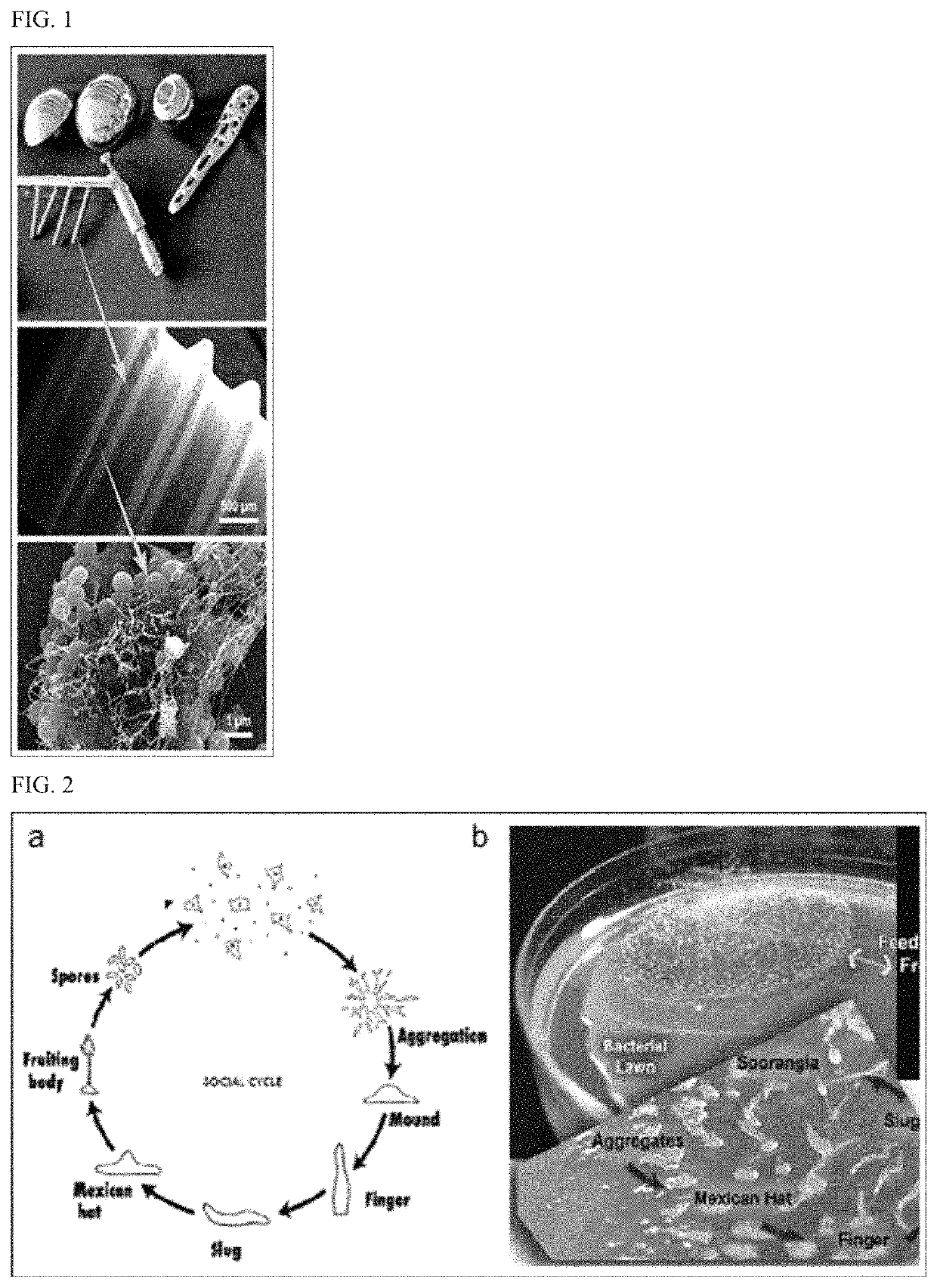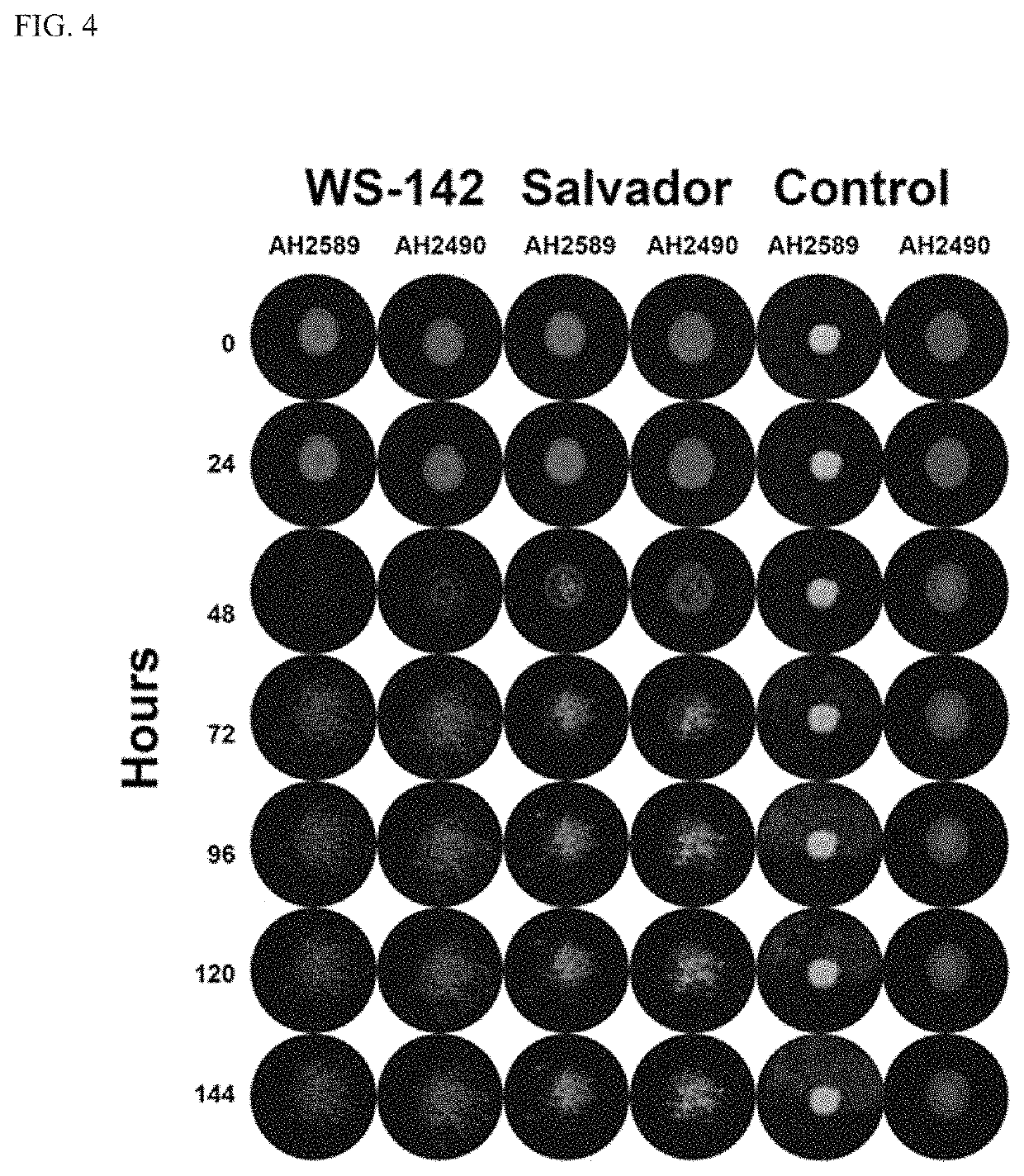Anti-biofilm agents and uses thereof
a biofilm agent and anti-biofilm technology, applied in the field of amoebae, can solve the problems of 500,000 deaths annually, high recalcitrance, and health threats, and achieve the effects of reducing the risk of infection
- Summary
- Abstract
- Description
- Claims
- Application Information
AI Technical Summary
Benefits of technology
Problems solved by technology
Method used
Image
Examples
example 1
[0086]Several other reasons, in addition to its clinical relevance (See Background) led to the choice of Se as the representative pathogen for this example: 1) Se was considered an atypical prey for Dicty, which consume predominantly the soil bacteria (Raper K B, Rahn A W. The dictyostelids. Princeton, N.J.: Princeton University Press; 1984. x, 453 p. p; Horn E. Ecology. 1971; 52(3):475-84. 2) The importance of biofilm in the virulence of Se was demonstrated in two animal models of device-associated infections (Li H, et al., Infect Immun; Rupp M E, et al., Infect Immun. 1999; 67(5):2627-32. 2005; 73(5):3188-91.; Rupp M E, et al., Infect Immun. 1999; 67(5):2656-9; Rupp M E, et al., Infect Immun. 1999; 67(5):2627-32). 3) Biofilm accumulation proteins in Se include Aap, which is a fibrillary EPS protein extruded from the cell in localized tufts (see FIG. 1, bottom panel) (Rohde H, et al., Mol Microbiol. 2005; 55(6):1883-95; Banner M A, et al., J Bacteriol. 2007; 189(7):2793-804), and f...
example 2
[0088]Dictyostelids feed through phagocytosis. As noted, biofilms are generally believed to be an effective defense mechanism against predation by amoebae because the amoebae cannot engulf big chunks of biofilms, and it is hard to mechanically break biofilms into small digestible pieces (Matz C, Kjelleberg S. Trends Microbiol. 2005; 13(7):302-7). Two other principal properties of the EPS have been noted that appear to contribute to resistance of biofilms to phagocytic predation (Matz C, Kjelleberg S. Trends Microbiol. 2005; 13(7):302-7). First, biofilms chemically interfere with phagocytic activity—the EPS acts as a diffusional road-block for the powerful antibacterials sent by the predatory macrophages. Third, the EPS may “hide” bacterial antigens recognized by phagocytes, interfering with receptor-mediated recognition of a prey particle (Celli J, Finlay B B. Trends in microbiology. 2002; 10(5):232-7.) Furthermore, the EPS matrix may participate in a variety of potential chemical d...
example 3
[0093]A further assay was carried out in clear-bottomed 96-well cell culture plates. To facilitate detection, readouts were based on crystal violet staining (Merritt J H, et al., Current Protocols in Microbiology. 2005; Chapter 1:Unit 1B). A plate reader was used to quantitate biofilm formation based on the number of bacterial cells attached to substrate (FIG. 6). The following procedure was adopted:
[0094]Sterile microtiter plates filled with 100 μl of the TSB / D medium per well were inoculated with the Se strain and incubated over night at 37 C with shaking. Four small trays were set up each containing 2 inches of tap water in last three trays. The first tray was used to collect waste, while the other three trays are used to wash the assay plates as described (Merritt J H, et al., supra). The contents of each well were briefly mixed by pipetting, and then 125 μl of the crystal violet / acetic acid solution from each well was transferred to a separate well in an optically clear flat-bo...
PUM
 Login to View More
Login to View More Abstract
Description
Claims
Application Information
 Login to View More
Login to View More - R&D
- Intellectual Property
- Life Sciences
- Materials
- Tech Scout
- Unparalleled Data Quality
- Higher Quality Content
- 60% Fewer Hallucinations
Browse by: Latest US Patents, China's latest patents, Technical Efficacy Thesaurus, Application Domain, Technology Topic, Popular Technical Reports.
© 2025 PatSnap. All rights reserved.Legal|Privacy policy|Modern Slavery Act Transparency Statement|Sitemap|About US| Contact US: help@patsnap.com



